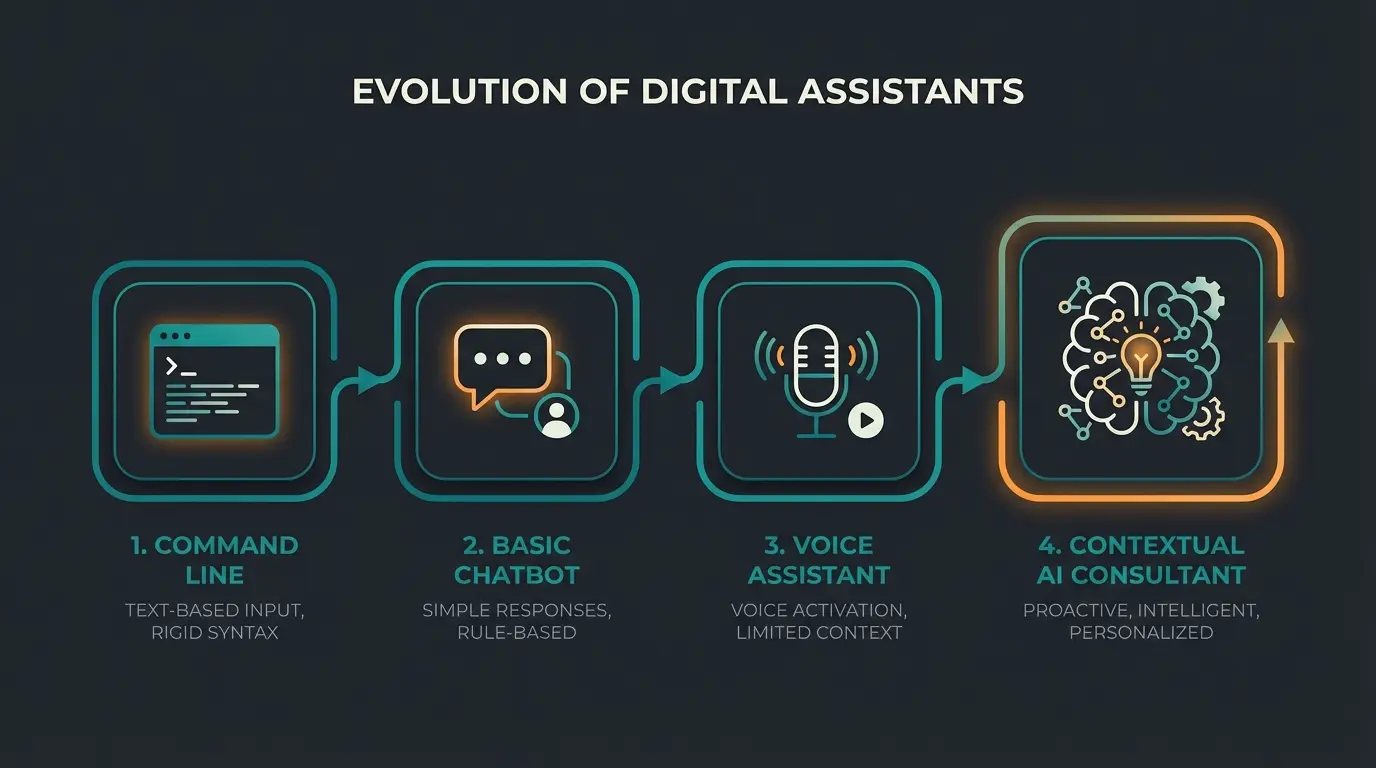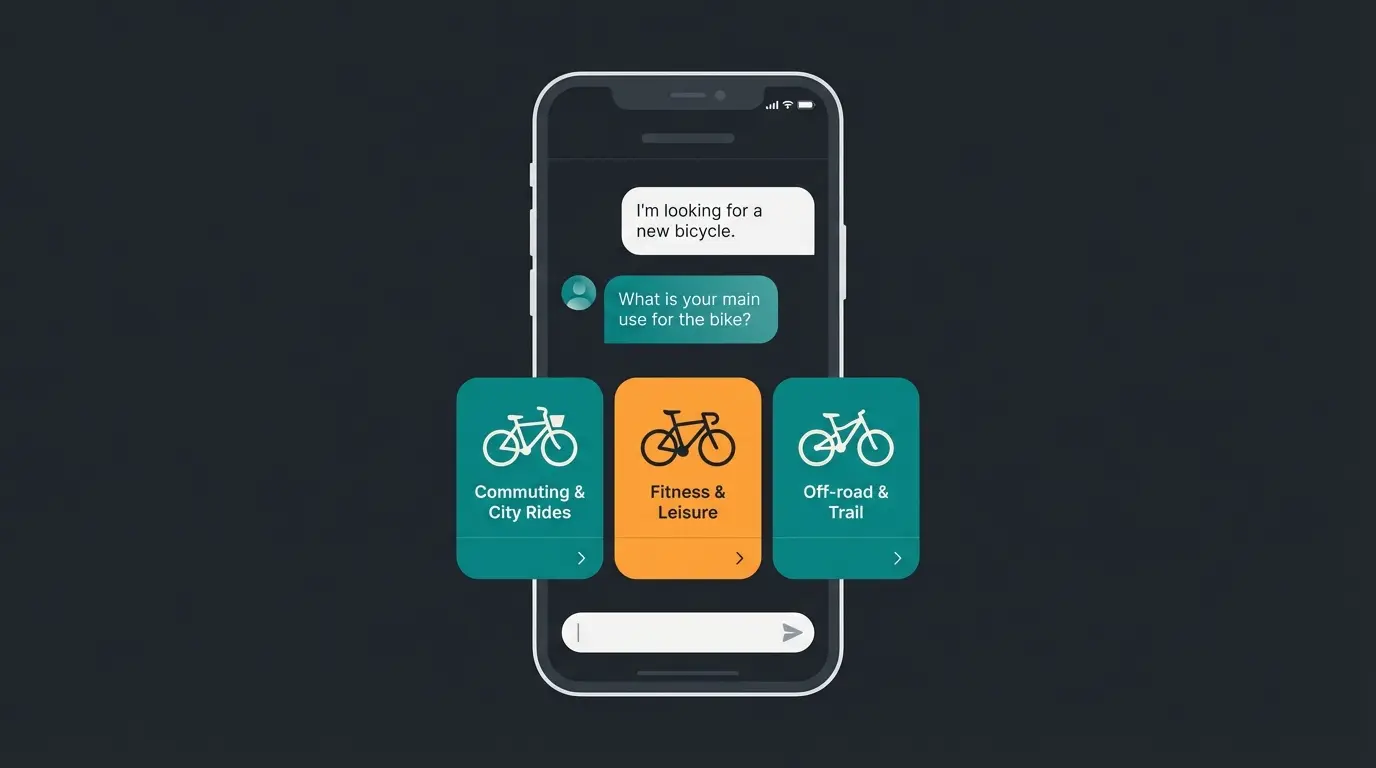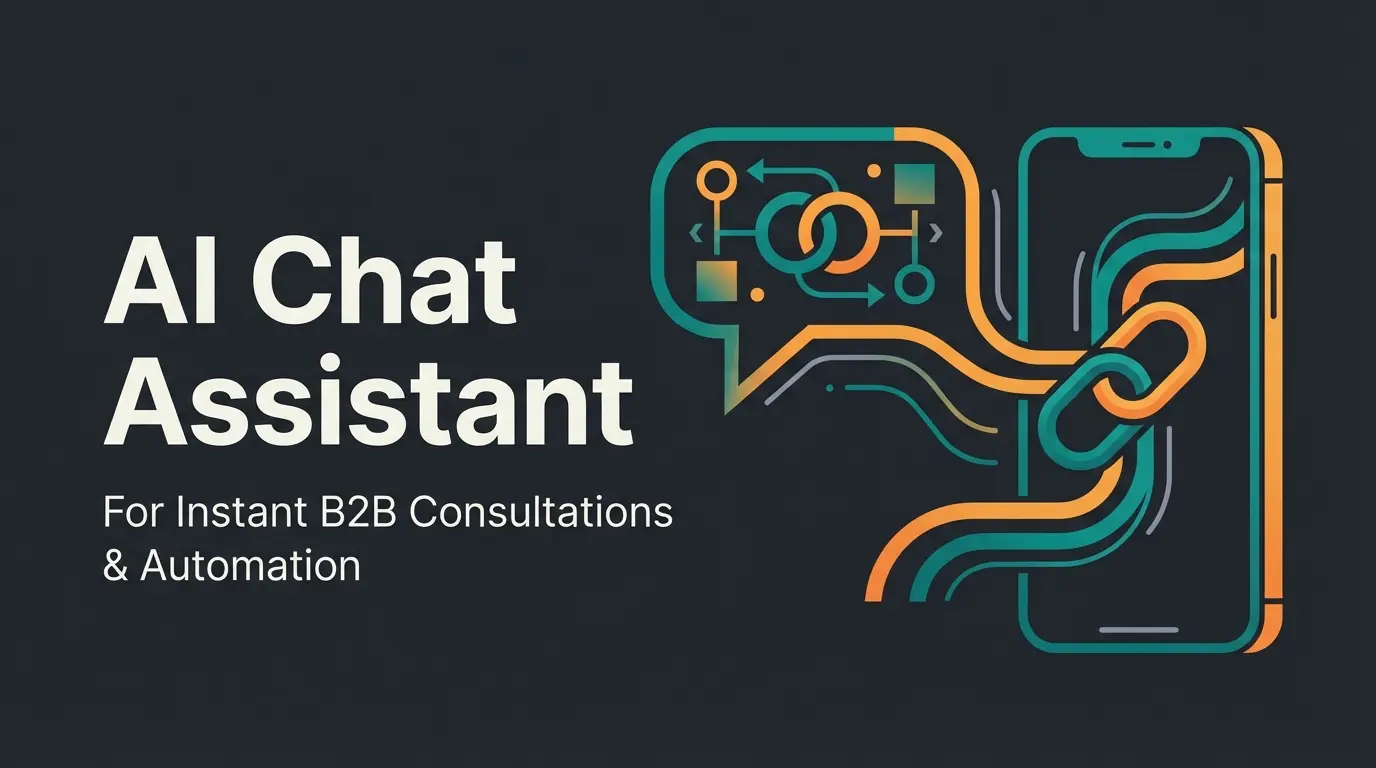Digital Assistants in Business: From Simple Chatbot to Intelligent Product Consultant (Guide 2025)
Discover how digital assistants are evolving from reactive chatbots to proactive sales experts. Learn how AI consultants boost revenue and solve choice paralysis.
Introduction to Digital Assistants
Digital assistants are intelligent software systems that simulate and support human interactions. They utilize artificial intelligence and machine learning to respond to user inputs and execute tasks. While everyone knows Siri or Alexa, these virtual helpers have made a significant impact on the business world in recent years, evolving far beyond simple voice commands.
In the private sphere, digital assistants facilitate numerous daily tasks. They help with scheduling, answer questions, control smart home devices, and support information retrieval. However, in the professional context, the stakes are higher. They optimize workflows, automate routine tasks, and most importantly, are beginning to take over complex sales and consultation roles to improve productivity and revenue.
The history of digital assistants dates back to the 1960s. Back then, the first chatbots were developed, capable of conducting simple dialogues. With technological progress, increasingly powerful systems emerged. Today, digital assistants like Siri, Google Assistant, or Alexa have become natural companions for many people, but the real revolution is happening in B2B applications where these assistants act as digital experts.

How Digital Assistants Work: The Tech Behind the Advice
The functioning of digital assistants is based on complex technological foundations. At the center stand artificial intelligence and machine learning. These technologies allow the assistants to learn from data and continuously improve their performance, which is critical for understanding complex customer needs.
A core aspect is Natural Language Processing (NLP). It allows digital assistants to understand and generate human language. NLP encompasses various subfields such as speech recognition, text analysis, and speech synthesis. Through this technology, digital assistants can conduct natural conversations and respond in context—moving away from rigid "keyword matching" to true semantic understanding.
The input possibilities for digital assistants are diverse. The most common form is voice input, where users formulate their requests verbally. Text-based inputs via chat interfaces are also widespread, especially in e-commerce. Increasingly, gestures and visual inputs are also being used, particularly in assistants with camera functions.
According to Statista, the global market for voice-based natural language processing is expected to reach a volume of 21 billion dollars by 2024. This underscores the growing importance and spread of digital assistants across various application areas.
Don't just answer questions—guide your customers to the right product with an intelligent digital assistant.
Start Your Free TrialTypes of Digital Assistants: Defining the Landscape
Digital assistants have developed strongly in recent years and today offer a multitude of functions for various application areas. To understand how they fit into a business strategy, we must distinguish between the three main categories: voice assistants, chatbots, and virtual assistants.
Voice Assistants (B2C Focus)
Voice assistants are the most well-known form of digital assistants. They respond to voice commands and execute various tasks. The most popular examples include:
- Siri: Apple's assistant for iOS devices
- Google Assistant: Available on Android devices and Smart Home products
- Alexa: Amazon's assistant, particularly known through Echo speakers
These assistants can make calls, send messages, give weather updates, play music, and control Smart Home devices. While excellent for consumers, their utility in complex B2B sales processes is limited compared to specialized interfaces.
Chatbots (Support Focus)
Chatbots are text-based digital assistants that are primarily used in customer communication. They can be implemented on various platforms, such as websites, messaging apps, or social media. Classic chatbots offer:
- Quick answers to frequently asked questions (FAQs)
- Support with simple service requests (e.g., order status)
- Forwarding to human employees for complex problems
Modern chatbots utilize AI and machine learning to conduct natural conversations and improve continuously, but they are often reactive—waiting for the customer to have a problem.
Virtual Assistants & Sales Consultants (The Evolution)
Virtual assistants are comprehensive systems that often come into play in companies or specialized applications. They combine properties of voice assistants and chatbots with extended functionality. Virtual assistants can:
- Execute complex tasks, such as scheduling or data analysis
- Integrate into various systems and software (CRMs, ERPs)
- Proactively guide purchasing decisions based on user needs
The boundaries between the different types of digital assistants are increasingly blurring as technology progresses. Conversational AI plays a significant role here by enabling more natural and context-related interactions.
Chatbot vs. Digital Sales Assistant: What is the Difference?
A crucial distinction often missed in business strategy is the difference between a bot that supports and an assistant that sells. While a classic chatbot reacts to problems, a digital sales assistant actively solves the "Choice Paralysis" customers face.
| Feature | Classic Chatbot (Support) | Digital Sales Assistant (Consultation) |
|---|---|---|
| Primary Goal | Reduce Ticket Volume / Save Cost | Increase Conversion / Generate Revenue |
| Interaction Style | Reactive (Waits for question) | Proactive (Asks questions to guide) |
| Complexity | Handles simple FAQs | Navigates complex product catalogs |
| Outcome | Customer gets an answer | Customer makes a purchase decision |
Areas of Application: More Than Just Customer Service
Digital assistants find application in various areas of daily life and the working world. Their versatility makes them valuable helpers in different scenarios, but the biggest growth area is in digital product consultation.
In the Private Environment
In private life, digital assistants support numerous tasks:
- Smart Home Control: Lighting, heating, and security systems can be controlled via voice command.
- Personal Organization: Setting reminders, managing calendars, and creating to-do lists.
- Information Retrieval: Quick answers to questions, from weather forecasts to sports results.
- Entertainment: Playing music, starting podcasts, or recommending movies.
In the Business Context: The Rise of Digital Product Consultation
In the business world, digital assistants are revolutionizing processes, moving beyond simple support to active revenue generation:
- Digital Product Consultation: This is the new frontier. An AI acts like a salesperson in a store, asking the customer about their needs ("Do you need the laptop for gaming or office work?") and recommending the perfect product. This directly addresses choice paralysis.
- Customer Service and Support: AI chatbots in customer service answer inquiries around the clock, reducing wait times and relieving human employees.
- Productivity Increase: Automation of routine tasks like email sorting or scheduling.
- Data Analysis: Quick evaluation of large data volumes and creation of reports.
These application possibilities contribute to efficiency increases in companies and allow employees to concentrate on more complex tasks.
In Specialized Industries
Digital assistants also find application in specialized areas:
- Healthcare: Support with patient admission, appointment management, and even diagnostic assistance.
- Finance Industry: Automated financial advice, fraud detection, and risk assessment.
- Education: Personalized learning aids and automated grading of tasks.
- Logistics: Optimization of supply chains and route planning.

How Digital Assistants Increase Revenue (ROI)
Digital assistants have gained significant importance in recent years, but the conversation is shifting from "Cost Saving" to "Revenue Generation". These intelligent helpers optimize workflows and facilitate daily life in diverse ways.
Time saving is one of the outstanding benefits of digital assistants. They take over routine tasks like managing appointments, creating shopping lists, or answering simple inquiries. This allows users to gain valuable time for more important activities.
A crucial benefit for sales is Reducing Choice Paralysis. When customers face too many options, they often buy nothing. A digital assistant simplifies complex choices by analyzing large amounts of data, recognizing patterns, and making specific recommendations. This is particularly valuable in areas like technical consumer goods, financial analysis, or medical diagnostics.
Another advantage is the improved accessibility of information and services. People with limited mobility or visual impairments benefit particularly from voice-controlled assistants that facilitate access to digital content.
Never miss a lead, even outside office hours.
Potential uplift when guiding users to the right product.
Instant responses reduce bounce rates significantly.
The increasing spread of digital assistants shows that more and more people recognize and use these benefits. According to statistics, the number of voice assistant users is expected to continue rising in the coming years, underscoring the growing trust in this technology.
Challenges and Limits
Despite their many benefits, digital assistants also face challenges and have certain limits. These aspects must be considered during the development and deployment of this technology.
A central issue is Data Privacy. Digital assistants collect and process large amounts of personal data to fulfill their functions. This raises questions about data security and privacy protection. Users must be aware of what information they are disclosing and how it is being used.
Technical Limitations of digital assistants are another challenge. Although they are constantly improving, they still have difficulties with complex contexts, irony, or ambiguous instructions. In such cases, misunderstandings or incorrect interpretations can occur.
Potential Sources of Error represent another limit. Digital assistants are based on algorithms and databases that are not always error-free. In critical application areas like medical advice or financial decisions, errors can have serious consequences.
Another challenge is Acceptance and Integration into everyday life. Not all people feel comfortable dealing with digital assistants or trust them. A habituation phase and careful introduction are often required to use the technology effectively.
To overcome these challenges, continuous development and improvement of digital assistants are necessary. As described in the article "What is an AI Chatbot?", developers are constantly working to improve the capabilities and reliability of these systems.
Future Trends 2025: The Rise of Specialized Helpers
The development of digital assistants is progressing rapidly. With advancing technology, new possibilities open up that will fundamentally change how we interact with digital helpers. Here is a look at the promising future perspectives:
Improved AI Capabilities
The progress in the field of artificial intelligence will make digital assistants even more powerful. Future systems will be able to handle more complex tasks and conduct more natural conversations. Natural language processing will continue to improve, allowing digital assistants to better understand nuances and contexts.
A key aspect of this development is the ability for continuous improvement through machine learning. Digital assistants will learn from every interaction and steadily optimize their performance. This leads to personalized experiences that adapt to the individual needs and preferences of users.
Integration of Augmented Reality
The merging of digital assistants with Augmented Reality (AR) opens up fascinating possibilities. Imagine your digital assistant projecting visual information directly into your field of view while giving you instructions or answering questions. This technology could find application in various areas:
- Navigation: AR-supported directions in real-time
- Education: Interactive learning environments with visual explanations
- Technical Support: Visual instructions for repairs or assembly
Networking with IoT Devices
The Internet of Things (IoT) will play a central role in the future of digital assistants. The increasing networking of everyday objects allows digital assistants to control and monitor a comprehensive ecosystem. This expanded connectivity brings several benefits:
- Automation: Seamless control of Smart Home devices
- Health Monitoring: Integration with wearables for personalized health tips
- Energy Management: Optimization of energy consumption in the household
Conclusion: The Importance of Digital Assistants in the Modern World
Digital assistants have evolved from simple voice control systems to indispensable helpers in everyday life. Their importance in the modern world can be pinned down to several aspects. They simplify and automate daily tasks, facilitate access to information, and offer tailored support based on individual needs.
The evolution of digital assistants has profound effects on how we interact with technology. Conversations with machines are becoming more intuitive and human-like. Digital assistants anticipate needs and offer proactive help. Future systems might even recognize emotional states and react to them.
In conclusion, digital assistants will play a key role in shaping our technological future. Their advancing development promises to make our lives simpler, more efficient, and more connected. At the same time, they present us with new challenges regarding data privacy, ethical use of AI, and the balance between human and machine interaction. It is up to us to use and shape this technology responsibly to exploit its full potential for a better future.
A chatbot is typically rule-based and reactive, designed to answer specific FAQs. A digital assistant uses advanced AI to understand context, learn from interactions, and proactively guide users through complex processes like purchasing decisions.
Yes, enterprise-grade digital assistants adhere to strict data privacy regulations (like GDPR). However, businesses must choose reputable providers and transparently communicate how data is used.
Absolutely. By acting as a 24/7 sales consultant, they can guide customers to the right products, upsell accessories, and reduce the drop-off rate caused by indecision or lack of information.
Implement a digital assistant that doesn't just chat, but actively sells. Try our solution today.
Get Started Now
